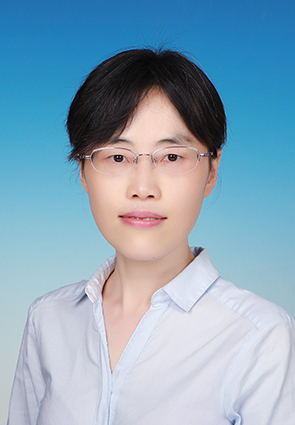 |
Zhang Jing |
|
Gender: female Department: College of Life Sciences Tel: +8618683641206 Office Location: Room 106, Si Jiao (The 4th Building) Career: Professor Major: Botany Email: jingzhang@nankai.edu.cn Address: Room 106, Si Jiao (The 4th Building) |
ResumeDr. Jing Zhang has received her Ph.D. degree on Botany at Peking University (China). After graduation, she carried out her postdoctoral research at University of Helsinki (Finland) and The Sainsbury Laboratory Cambridge University (SLCU) in England. Jing started her new position at Nankai University in Tianjin to establish her own lab from October 2021.
Jing is interested in the mechanism of plant vascular development and vascular tissue regeneration. She has been focusing on the genetic regulation of vascular cambial development and secondary growth in Arabidopsis roots for years. Recently, she also turned her attention to cork cambium (phellogen) and periderm development in Arabidopsis roots and Populus stems.
Education2011.8 Doctor’s degree in Botany, School of Life Sciences, Peking University (China);
2003.6 Bachelor’s degree in Bioengineering, China Agricultural University (China)
WorkExperience2017.2- 2021.7 Postdoc, Institute of Biotechnology, HiLIFE, University of Helsinki (Finland);
2015.1- 2017.1 Research Associate, The Sainsbury Laboratory, University of Cambridge (UK);
2009.8- 2014.12 Postdoc, Institute of Biotechnology, University of Helsinki (Finland);
2003.9- 2009.7 PhD, Plant Biology, School of Life Sciences, Peking University (China);
2006.7-2008.4 Visiting researcher, Biological Sciences, University of Southampton (UK);
1999.7-2003.6 Bachelor, Bioengineering, China Agricultural University (China).
Research Fields1.The genetic and mechanical regulation of vascular and cork cambia during the secondary growth of plants. 2.Plant secondary vascular tissue regeneration and its hormonal regulation. 3.Periderm development and its regeneration. Achievement1. Zhang J, Eswaran G, Alonso-Serra J, Kucukoglu M, Xiang JL, Yang WB., Elo A, Nieminen K, Damén T, Joung J-G, Yun J-Y, Lee J-H, Ragni L, de Reuille P, Ahnert ES, Lee J-Y, Mähönen AP and Helariutta Y. 2019. Transcriptional regulatory framework for vascular cambium development in Arabidopsis roots. Nature Plants5:1033-1042. 2. Chen JJ, Wang L, Immanen J, Nieminen K, Spicer R, Helariutta Y, Zhang J* and He XQ*. 2019. Differential roles of auxin and cytokinins during secondary vascular tissue regeneration in Populus. (*corresponding author) New Phytologist 224: 188–201. 3. Zhang J, Serra JA and Helariutta Y. 2015. Wood development: Growth through knowledge. Nature Plants 1, Article number: 15060 doi:10.1038/nplants.2015.60. 4. Zhang J, Nieminen K, Serra JA and Helariutta Y. 2014. The formation of wood and its control. Current Opinion in Plant Biology17:56-63. 5. Zhang J, Gao G, Chen JJ, Taylor G, Cui KM and He XQ. 2011. Molecular features of secondary vascular tissue regeneration after bark girdling in Populus. New Phytologist 192:869-84. 6. Zhang J, Elo A and Helariutta Y. 2011. Arabidopsis as a model for wood formation. Current Opinion in Biotechnology 22:293-299. 7. Ye L, Xin Wang X, Lyu M, Siligato R, Eswaran G, Vainio L, Blomster T, Zhang J and Mähönen AP. 2021 Cytokinins initiate secondary growth in the Arabidopsis root through a set of LBD genes. Current Biology31: 1-9. 8. Spallek S, Melnyk CW, Wakatake T, Zhang J, Sakamoto Y, Kiba T, Yoshida S, Matsunga S, Sakakibara H and Shirasu K. 2017. Interspecies hormonal control of host root morphology by parasitic plants.Proc Natl Acad Sci U S A114(20):5283-5288. 9. Immanen J, Nieminen K, Smolander O, Kojima Mikiko, Serra JA, Koskinen P, Zhang J, Elo A, Mahonen A, Street N, Bhalerao R, Paulin L, Auvinen P, Sakakibara H and HelariuttaY. 2016.Cytokinin and auxin display distinct but interconnected distribution and signaling profiles to stimulate cambial activity. Current Biology26 (15): 1990–1997. 10. Siligato R, Wang X, Yadav SR, Lehesranta S, Ma G, Ursache R, Sevilem I, Zhang J, Gorte M, Prasad K, Wrzaczek M, Heidstra R, Murphy A, Scheres B, Mähönen AP. 2016. MultiSite Gateway-Compatible Cell Type-Specific Gene-Inducible System for Plants. Plant Physiology170(2):627-41. 11. Randall RS, Miyashima S, Blomster T, Zhang J, Elo A, Karlberg A, Immanen J, Nieminen K, Lee JY, Kakimoto T, Blajecka K, Melnyk CW, Alcasabas A, Forzani C, Matsumoto-Kitano M, Mähönen AP, Bhalerao R, Dewitte W, Helariutta Y and Murray JAH. 2015. AINTEGUMENTA and the D-type cyclin CYCD3;1 regulate root secondary growth and respond to cytokinins. Biology Open00, 1-8 doi:10.1242/bio.013128 12. Liebsch D, Sunaryo W, Holmlund M, Norberg M, Zhang J, Hall HC, Helizon H, Xu Jin X, Helariutta Y, Nilsson O, Polle A and Fischer U. 2014. Class I KNOX transcription factors promote differentiation of cambial derivatives into xylem fibers in the Arabidopsis hypocotyl. Development 141, 4311-4319. 13. Chen JJ, Zhang J, He XQ. 2014. Tissue regeneration after bark girdling: an ideal research tool to investigate plant vascular development and regeneration. Physiologia Plantarum151:147-155. 14. Immanen J, Nieminen K, Zhang J, Bhalerao R, Helariutta Y. 2011. Enhanced cytokinin signaling stimulates cell proliferation in cambium of Populus. BMC Proceedings, 5(Suppl 7):O23 15. Tallis MJ, Lin Y, Rogers A, Zhang J, Street NR, Miglietta F, Karnosky DF, De Angelis P, Calfapietra C, Taylor G. 2010. The transcriptome of Populus in elevated CO2 reveals increased anthocyanin biosynthesis during delayed autumnal senescence. New Phytologist186:415-428. 16. Pang Y, Zhang J, Cao J, Yin SY, He XQ, Cui KM. 2008. Phloem transdifferentiation from immature xylem cells during bark regeneration after girdling in EucommiaulmoidesOliv. Journal of Experimental Botany59 :1341-1351. Social AppointmentsTeaching ExperienceHonor Title |
|
|
|
27 Access |